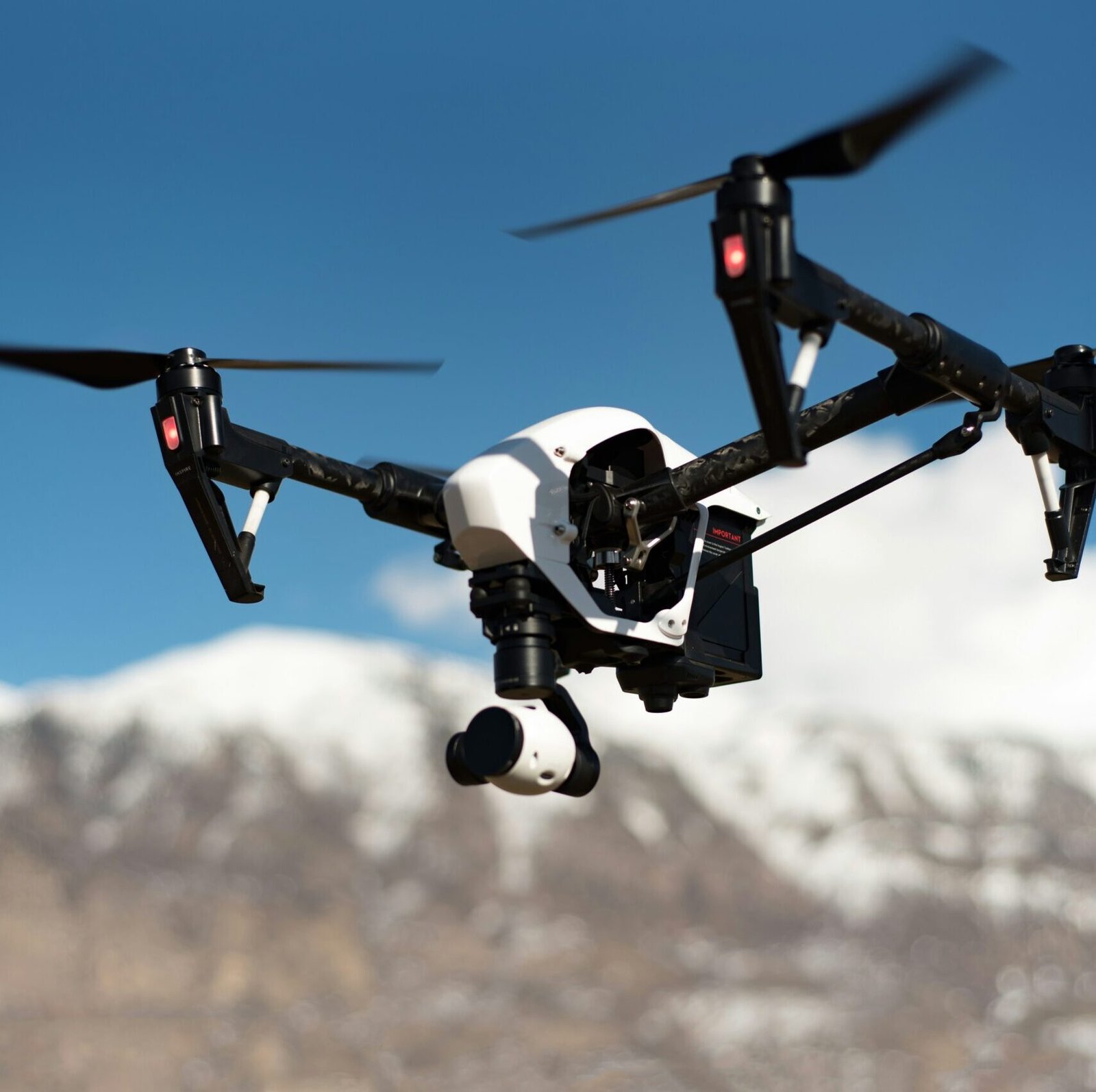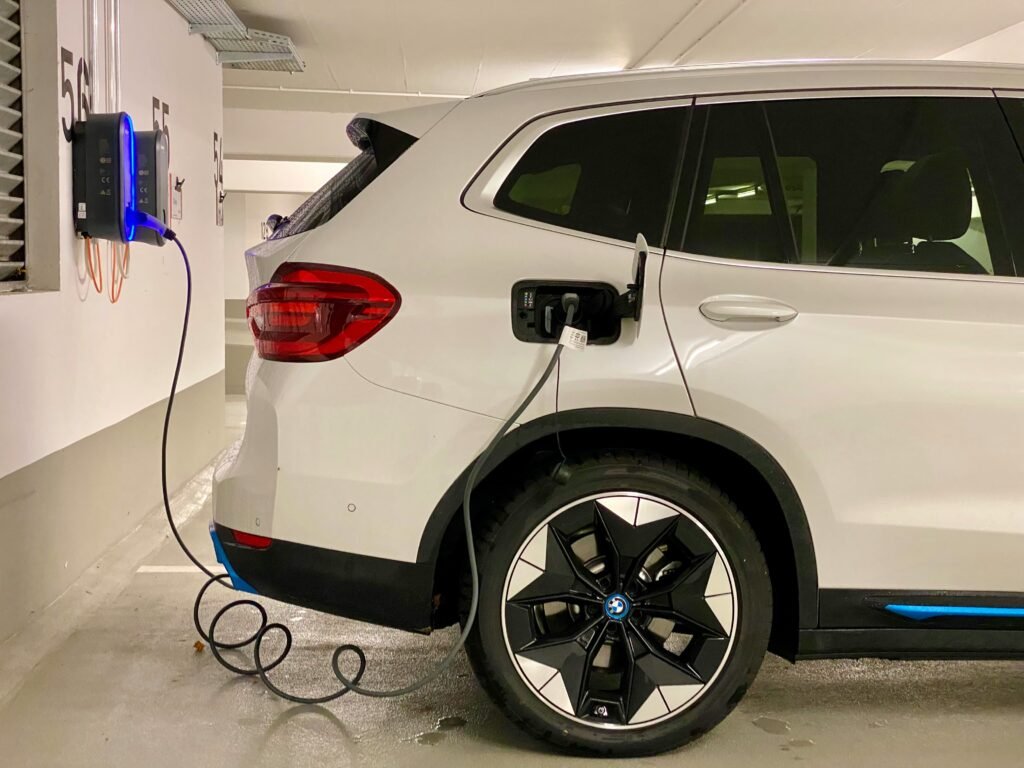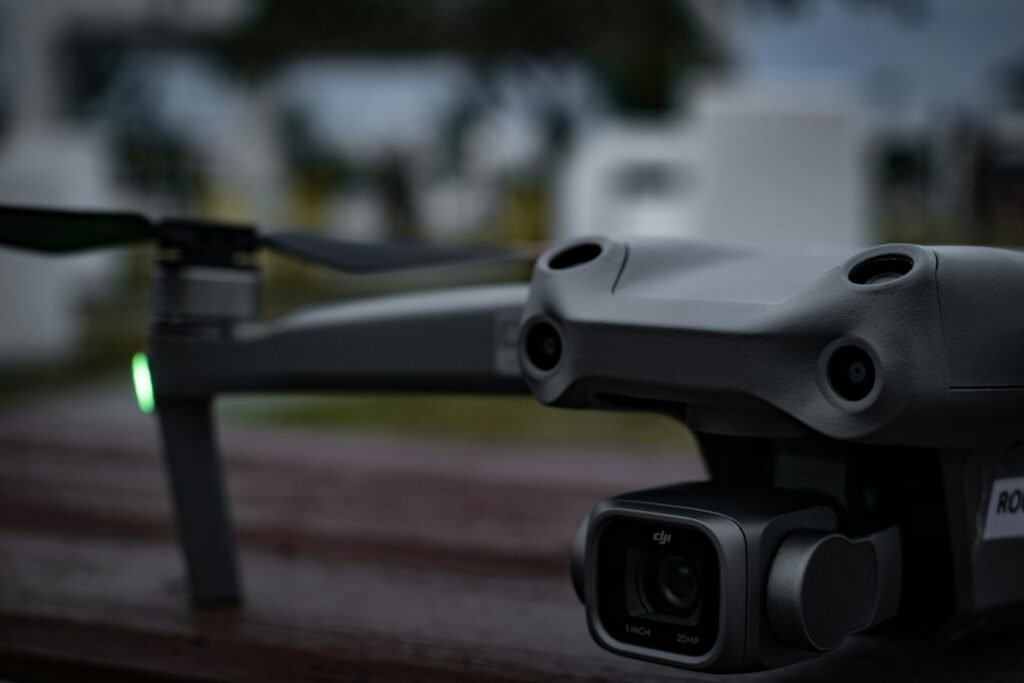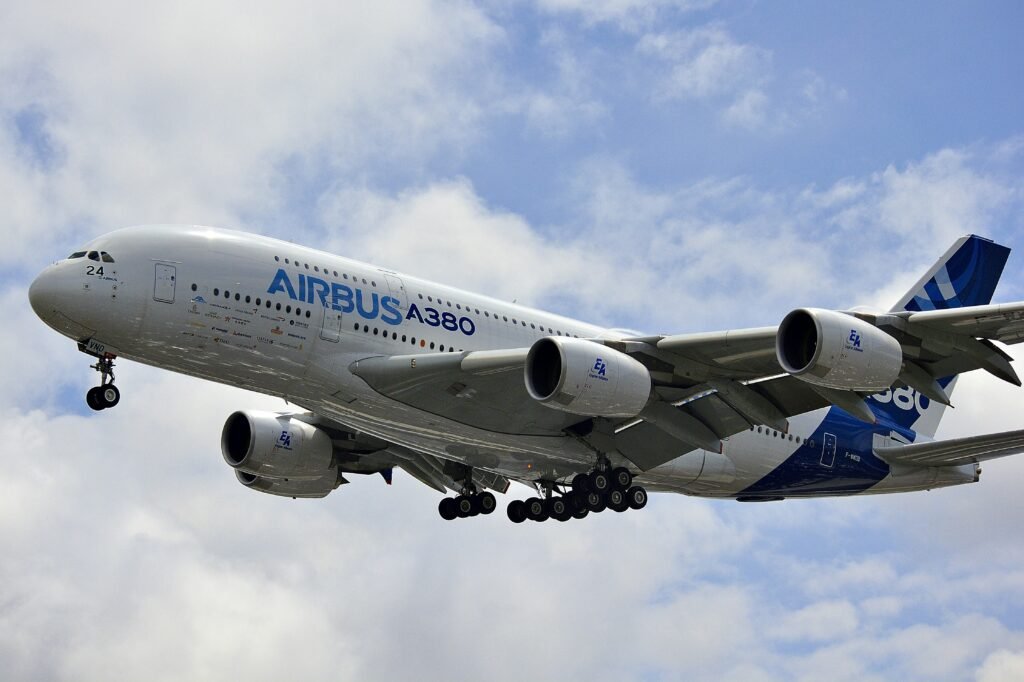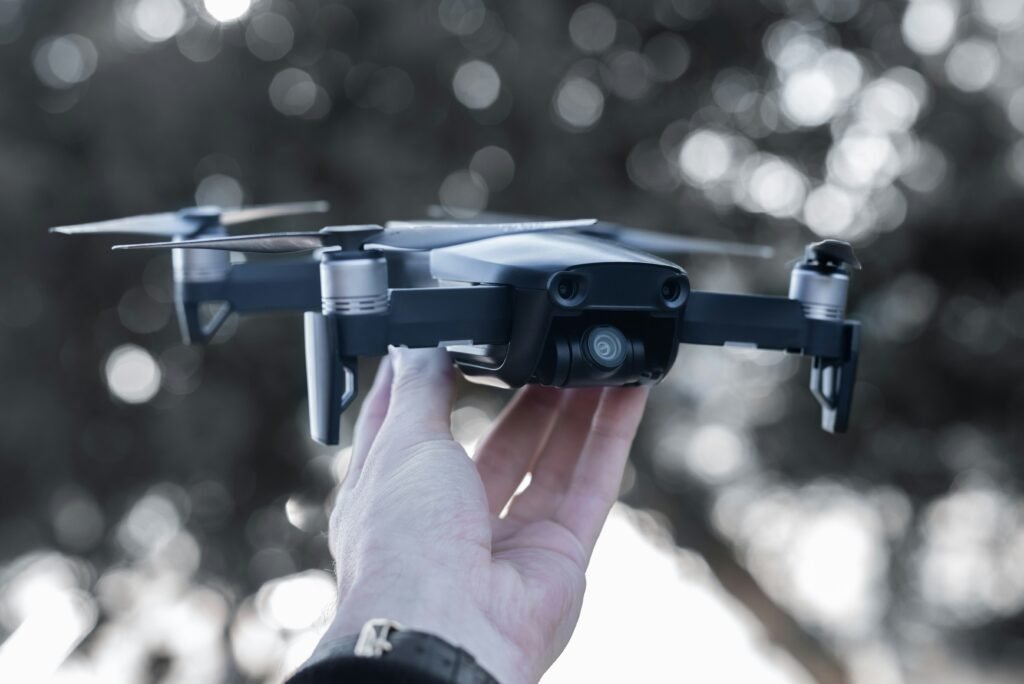
Introduction to 8K Drone Technology
In recent years, the evolution of drone technology has led to significant advancements in aerial photography and videography, particularly with the adoption of 8K resolution cameras. 8K resolution denotes a display resolution of approximately 7680 x 4320 pixels, which is four times the resolution of 4K and sixteen times that of Full HD. This remarkable detail resolution not only provides a stunning visual experience but also allows for greater flexibility in editing, offering content creators the ability to crop or zoom into their shots without sacrificing image quality.
The relevance of 8K resolution in fields such as filmmaking, real estate marketing, and surveillance cannot be overstated. Filmmakers and content creators are increasingly leaning towards high-definition imagery to capture breathtaking landscapes and vivid scenes with lifelike detail. In particular, aerial footage captured by 8K drones can transform a standard production into a visually compelling masterpiece, captivating the audience and improving engagement. Moreover, in the realm of real estate, high-resolution drone videos are becoming essential tools for showcasing properties, enabling potential buyers to appreciate the full scope and layout of properties from above.
In addition, the surveillance sector recognizes the utility of 8K drones in enhancing security measures. High-definition resolution allows security professionals to identify potential threats with exceptional clarity and detail, making 8K drones a vital tool in risk management and safety protocols across various industries. DJI, as a leader in the drone market, has made substantial strides in refining and implementing this cutting-edge technology, making it accessible for both amateur hobbyists and professional users alike. The rising demand for high-definition content emphasizes the importance of 8K drone technology in setting new benchmarks for visual storytelling and documentation.
The Evolution of DJI Drone Cameras
The history of DJI drone cameras is marked by significant advancements in technology, reflecting the ever-evolving landscape of aerial photography and videography. Founded in 2006, DJI initially focused on developing flight control systems before venturing into drone manufacturing. The introduction of the Phantom series in 2013 marked a pivotal moment, featuring an integrated camera that opened the skies to both professional filmmakers and hobbyists. This marked the beginning of a trend towards compact, high-quality imaging solutions delivered through unmanned aerial vehicles.
In the following years, DJI continued to innovate with the release of the Phantom 3, which offered 4K video recording capabilities. This drone demonstrated that high-resolution imaging was not only possible in a consumer-friendly format but also crucial for capturing breathtaking aerial footage. The push for higher resolutions led to the release of models like the Inspire series, aimed primarily at professional users, which featured interchangeable lenses and enhanced camera capabilities.
The release of the Mavic series further democratized access to advanced aerial photography. With their portability and sophisticated image capture technology, models like the Mavic Pro significantly reduced the barrier to entry for content creators. The integration of advanced features, such as obstacle avoidance and intelligent flight modes, allowed users to capture stunning visuals safely and effortlessly.
As user demand for higher resolutions grew, DJI responded expertly with the launch of its 8K drone models. By enhancing aspects such as color accuracy, dynamic range, and stabilization technology, DJI solidified its reputation as a leader in the drone camera market. Their relentless pursuit of innovation not only reflects a commitment to meeting the evolving needs of users but also illustrates the company’s pivotal role in shaping the future of aerial imaging technology.
Understanding 8K Resolution
8K resolution represents one of the highest standards in digital imaging, marking a significant leap from its predecessor, 4K resolution. Specifically, 8K resolution offers a pixel count of 7680 x 4320, resulting in approximately 33.2 million pixels. This number is four times higher than that of 4K and sixteen times greater than Full HD (1080p). The increased pixel density translates to unparalleled image clarity, allowing viewers to discern even the most intricate details within the frame. This enhanced clarity is especially beneficial in cinematic productions, where visual storytelling relies heavily on high-quality visuals.
One of the primary advantages of filming in 8K is the superior detail it provides. The higher resolution allows for exceptional image fidelity, which is crucial in environments where high performance is required, such as wildlife filming, aerial cinematography, and large-scale visual displays. As 8K content becomes more accessible, filmmakers can leverage this technology to produce images that are more vivid and lifelike than ever before.
Furthermore, 8K footage offers significant versatility in post-production. When working with high-resolution video, editors have the flexibility to crop scenes without sacrificing image quality. This capability is particularly advantageous for those engaged in content creation who desire to reframe footage for various uses without compromising the overall resolution or clarity. The result is a more dynamic storytelling approach that accommodates creative editing choices.
Although 8K technology is still emerging in the consumer market, its advantages are becoming increasingly recognized. As advancements continue, 8K resolution stands poised to redefine industry standards, particularly in the realm of high-end productions. Embracing this technology may lead content creators to enhance their visual narratives, establishing a new benchmark for digital content quality.
Key Specifications of DJI’s 8K Cameras
The integration of advanced technology in DJI’s 8K camera drones is evident in their specifications, which cater to both professional filmmakers and hobbyists alike. At the heart of these systems is the sensor size, typically highlighting a larger-than-average sensor that captures more light, thus significantly enhancing image quality. The 1-inch CMOS sensor found in many DJI models not only improves dynamic range but is also instrumental in achieving stunning detail in 8K resolution, which is increasingly relevant in today’s high definition filming standards.
Another critical aspect of DJI’s 8K cameras is the lens specifications. These drones are commonly equipped with high-quality lenses that offer wide apertures, allowing for improved low-light performance—a feature that is especially beneficial for twilight or night shooting. The precision optical design ensures minimal distortion and maximum clarity across the frame, further elevating the shooting experience. The incorporation of interchangeable lenses in certain models also allows users greater flexibility in adapting to various filming environments.
Image stabilization technology stands as a pivotal feature in DJI’s latest offerings. The introduction of 3-axis gimbal stabilization systems effectively counteracts any jerky movements caused by turbulence during flight, ensuring that the footage remains smooth and professional-looking, even in challenging conditions. This stabilization is critical for achieving steady shots when capturing high-resolution 8K video.
For professionals who demand versatility, the supported frame rates in these 8K drones enhance cinematic storytelling. Offering options such as 24, 30, and even 60 frames per second, these models provide filmmakers with the freedom to choose how they want to present their vision, whether through real-time action or cinematic slow-motion effects.
Finally, low light performance remains an essential consideration for many creators. DJI’s engineered solutions, including enhanced noise reduction algorithms, ensure that users can maintain image quality even in darker settings. These specifications combine to create a robust 8K camera system that meets the evolving needs of aerial cinematography.
The Impact of 8K Video on Aerial Photography
The advent of 8K video technology has profoundly transformed the realm of aerial photography, offering a plethora of benefits that significantly enhance the craft. One of the most notable improvements is the increased resolution, allowing for superior detail and clarity in imagery. With an 8K resolution, photographers can capture visuals that are eight times clearer than traditional 1080p HD. This enhancement not only elevates the overall quality of aerial shots but also enables photographers to crop images without losing essential details, giving them greater flexibility in post-processing.
Color depth and dynamic range are other critical aspects significantly affected by the shift to 8K video. The ability to record with a wider gamut of colors results in more vibrant and lifelike imagery. Photographers can capture the subtleties of color variations that were previously difficult to portray, especially in landscapes where varying hues and contrasts play an essential role. Additionally, the extended dynamic range allows for better details in both the shadows and highlights of an image, granting photographers more creative freedom to play with light in their shots.
Furthermore, the storytelling potential of aerial photography is amplified through 8K captures. The enhanced visual quality facilitates the creation of immersive narratives that engage viewers on a deeper level. Industries such as real estate, tourism, and environmental conservation can greatly benefit from utilizing 8K video. In real estate, high-resolution aerial shots can showcase properties more attractively, while tourism promotions can leverage stunning visuals to entice potential visitors. Environmental documentaries can utilize the technology to enlighten audiences on vital conservation issues, making the overall storytelling richer and more compelling.
In conclusion, the impact of 8K video on aerial photography is multifaceted, offering improvements in detail, color representation, and narrative capabilities that are reshaping the industry landscape.
User Experience and Usability in DJI Drones
When it comes to drone technology, user experience and usability are pivotal factors that define the engagement levels of both professionals and hobbyists. DJI has made substantial strides in designing its 8K drones, particularly focusing on ease of use. These drones come equipped with intuitive controls that streamline the pilots’ ability to navigate and capture high-quality footage without requiring extensive technical knowledge. With user-friendly interfaces, even those new to drone photography can easily learn to operate these sophisticated machines.
A significant aspect of the user experience lies in the advanced flight stability features embedded in DJI’s 8K drones. With cutting-edge stabilization technology, these drones can produce smooth, cinematic-quality videos even in less than ideal conditions. This stability not only enhances the usability of the drone during flight but also ensures high-quality outputs—a feature that appeals to videographers looking for reliability. Additionally, the drones’ advanced GPS systems allow for precise navigation, giving users confidence during their aerial operations.
Furthermore, the return-to-home capability is a standout feature that enhances both usability and safety. By allowing the drone to autonomously return to its takeoff point when the battery is low or the signal is lost, users can operate their drones with reduced anxiety, particularly in unfamiliar environments. Feedback from the drone community shows that this feature is often regarded as essential for both safety and convenience.
User experiences shared through various forums and social media platforms substantiate these claims. Many users laud DJI’s continuous improvements in usability, stating that the manufacturer has actively listened to customer feedback to refine drone functionalities further. This proactive approach to incorporating user suggestions reveals DJI’s commitment to enhancing user experience, making their 8K drones not just a tool for professionals but also an appealing choice for the leisure enthusiast looking to explore the skies.
Comparative Analysis of DJI’s 8K Drones
The rapid advancements in drone technology have led to an increasingly competitive marketplace wherein DJI frequently stands out due to its pioneering 8K camera capabilities. However, several contenders have emerged, offering impressive alternatives that require careful consideration. One key aspect is pricing; DJI’s 8K drone models, such as the Mavic 3, generally range from $2,000 to $3,000. In contrast, competitors like Autel Robotics and Skydio provide 8K options at varied price ranges. For instance, the Autel EVO Lite+ is competitively priced around $1,800, making it an attractive alternative for budget-conscious consumers.
Performance is another crucial factor when comparing DJI’s offerings with those of competitors. DJI drones are renowned for their reliability and streamlined operation, boasting innovative features like obstacle avoidance and intelligent flight modes. Other brands, while often offering notable flight times and good camera quality, may lack the refinement and user-friendly design characterized by DJI. For example, the Skydio 2 excels in autonomous flight capability, yet still falls short in terms of camera resolution and overall video quality compared to DJI’s 8K solutions.
Features and functionality also play a pivotal role in comparison. DJI’s 8K drones often come equipped with advanced features such as hyperlapse and assorted intelligent shooting modes, enhancing the video production process. Competing brands tend to offer similar functionalities but may not implement them as effectively. Additionally, the post-processing capabilities provided by DJI—integrating seamlessly with software like Adobe Premiere Pro—add substantial value for professionals requiring optimal editing capacity.
In conclusion, while DJI’s 8K drone technology maintains a strong foothold in the market due to its superior combination of performance, features, and post-processing capabilities, competitors are continually evolving. This ongoing competition encourages innovation and drives improvements across the board, making it essential for potential buyers to thoroughly evaluate their options based on personal or business requirements.
Future Trends in Drone Camera Technology
The drone camera technology landscape is rapidly evolving, with significant advancements expected in the coming years. As we look to the future, one of the most notable trends is the continuous push towards higher resolutions. With the introduction of 8K drone cameras, manufacturers such as DJI have set a new standard for image quality. Future iterations may push beyond 8K, exploring even higher resolutions to meet the increasing demands from both professional and recreational users who require the sharpest image quality for various applications.
In conjunction with enhanced resolution, there is a growing emphasis on improved dynamic range and low-light performance. This evolution is vital for capturing high-quality footage in diverse environments, from bright sunny days to challenging night settings. Advanced sensors and image processing technologies will likely play a critical role in these improvements. Furthermore, incorporating artificial intelligence (AI) into drone camera technology could revolutionize the way footage is captured and edited. With AI capabilities, drones can automatically optimize settings and even suggest angles based on environmental conditions, resulting in more compelling visual narratives.
Another anticipated trend is the integration of augmented reality (AR) features within drone camera systems. This technology could provide real-time data overlays, allowing operators to visualize information regardless of the environment. Such developments would be particularly beneficial in sectors like agriculture, real estate, and film production, where enhanced situational awareness can lead to better decision-making.
Additionally, as drone regulations evolve, there will be a greater emphasis on safety and reliability. Innovations such as detect-and-avoid systems and enhanced surveillance capabilities will contribute to safer operation in increasingly crowded airspace. DJI is well-positioned to lead these trends, continually setting benchmarks that not only enhance the user experience but also push the boundaries of what drone technology can achieve.
Conclusion: The Future of Aerial Imaging with 8K Technology
The advent of 8K technology in drone camera systems represents a significant leap forward in aerial imaging. With its extraordinary resolution, 8K not only enhances the quality of visual content but also opens new avenues for creative expression and professional applications. The stunning detail captured by 8K DJI drone cameras allows filmmakers, photographers, and other creatives to explore previously unimaginable levels of clarity and precision in their work.
Industries such as real estate, agriculture, and environmental monitoring are set to benefit immensely from this cutting-edge resolution. In real estate, for example, high-definition aerial footage can provide potential buyers with an unparalleled perspective of properties, thus improving sales opportunities. Similarly, in agriculture, farmers can utilize 8K drone imagery to assess crop health and optimize yields through precise data analysis.
Moreover, as technology continues to advance, the future of drone capabilities will inevitably involve enhanced functionalities such as improved stabilization, extended flight times, and smarter automation. This evolution will further enrich the quality of aerial imaging, making drones indispensable tools in various professional fields. For instance, filmmakers will enjoy higher production values, while environmentalists can get more accurate assessments of ecosystems, thereby facilitating better conservation efforts.
As the industry progresses, staying informed about the latest developments in 8K drone technology and aerial imaging will be crucial for professionals looking to remain competitive. The ability to harness the power of high-resolution imagery not only elevates creative projects but also supports critical decision-making processes across numerous sectors. Therefore, embracing and investing in 8K drone technology represents a strategic opportunity in a rapidly evolving digital landscape.
